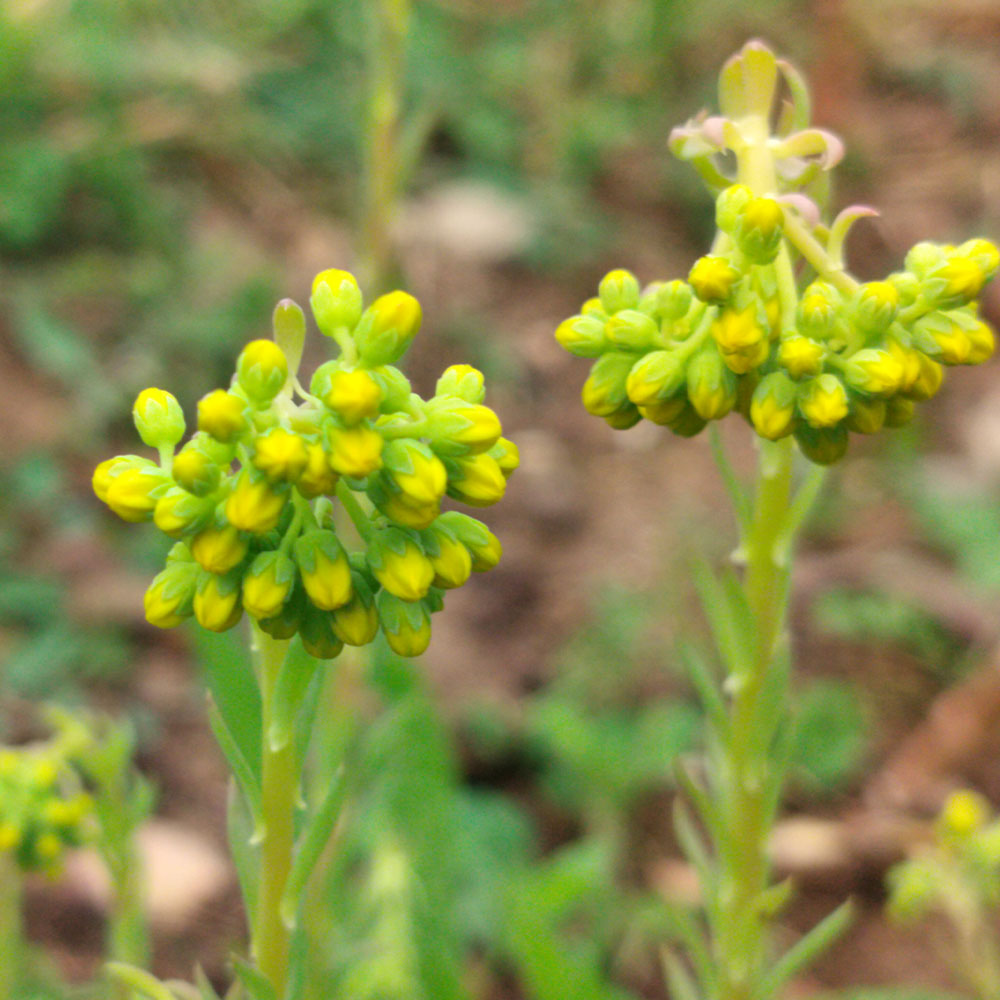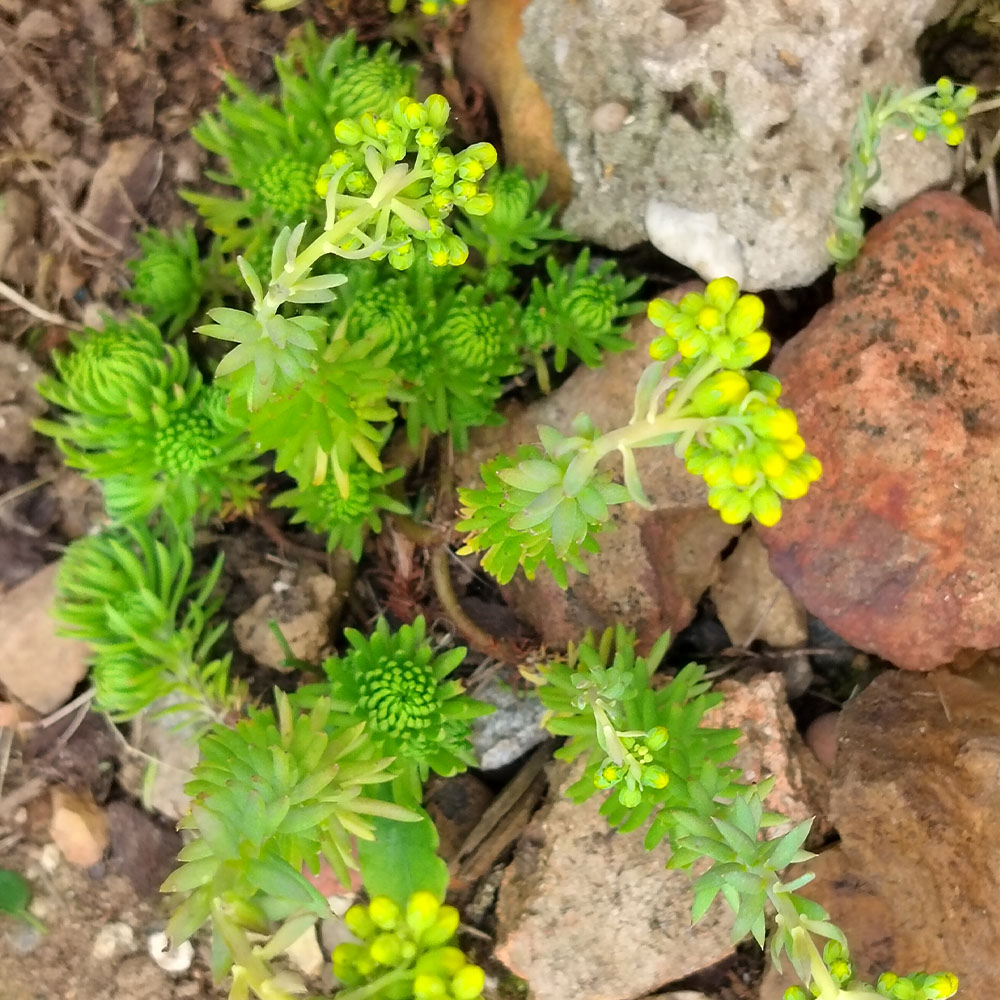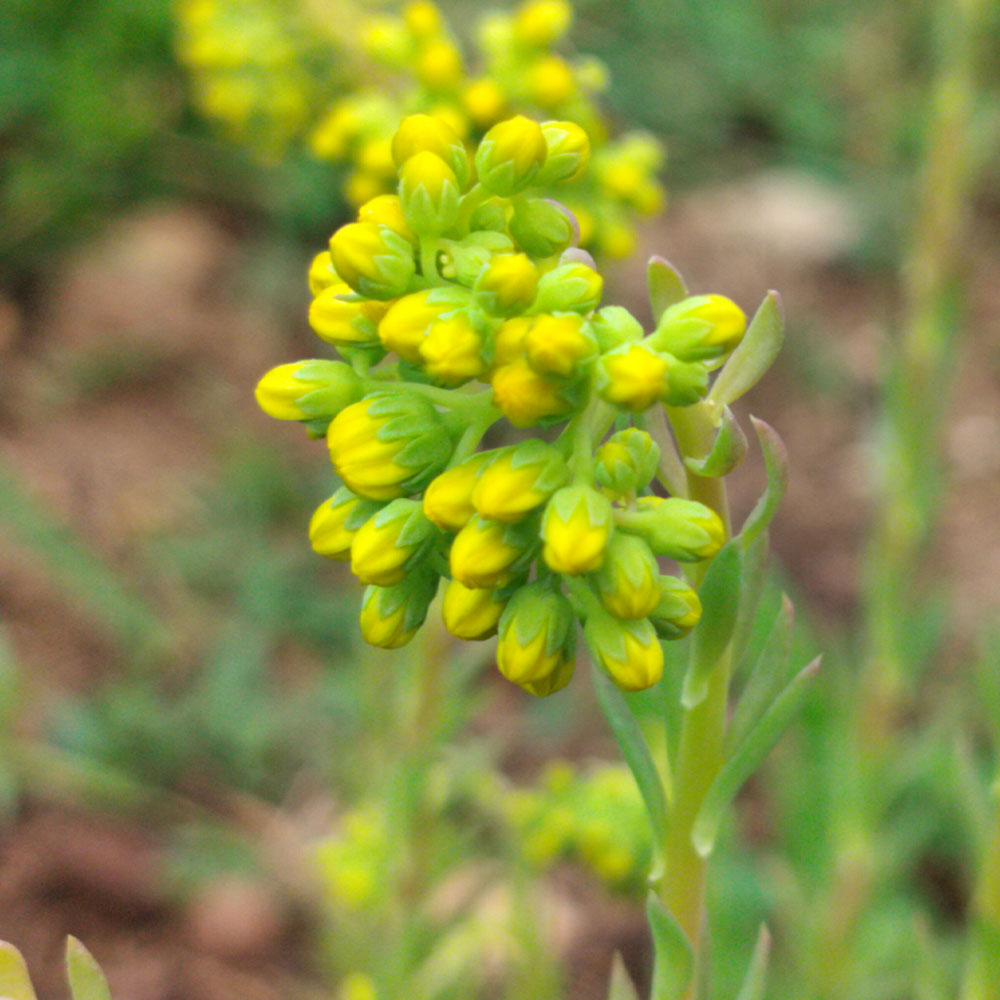No products in the cart.
Sedum ochroleucum ‘Green Ball’
An elegant blue, low-maintenance perennial ground cover.
Rated 0 out of 5
0 customer reviews
4,08 €
Only 10 item(s) left in stock!
SKU: pda354
Category: Balcony-Friendly, Bees and Butterflies, Bouquet, Evergreen, Frost Hardy, Ground Cover, Make it Pop, Rewild

Sedum ochroleucum 'Green Ball'
4,08 €
Only 10 item(s) left in stock!
Sedum ochroleucum ‘Green Ball’ is a compact, low-growing succulent in the Crassulaceae family.
It forms dense, rounded mounds of small, fleshy, bright green leaves, giving it a distinctive “ball-like” appearance.
Its foliage pairs easily with darker or lighter tones, such as Sedum ‘Angelina’ or Sedum pachyclados.
This variety is particularly striking with its fine, gray-green, bristly leaves that give it its distinctive spherical shape at the tips of its stems.
The leaves are evergreen, remaining densely branched throughout the winter.
The fast growing, upright stems carry clusters of small, star-shaped yellow flowers in the summer
A great pick for rock gardens, dry borders, and large expanses of ground that need a bit of covering up.
This cultivar is particularly appreciated for its neat, architectural form and its ability to thrive in rock gardens, alpine gardens, containers, and as groundcover.
Learn more about caring for your Sedum:
The Tales & The Botany: Sedum ochroleucum ‘Green Ball’
The plant can be seen on ‘green roofs’ or ‘green wall’ systems in Korea where plants are incorporated into the structure of the building, providing habitats for wildlife and innovative insulation solution for humans.
🌸 Floral Morphology: Sedum ochroleucum ‘Green Ball’
Sedum ochroleucum ‘Green Ball’ produces small, star-shaped creamy-yellow flowers, arranged in dense terminal clusters.
Flowering occurs from late spring to early summer and attract bees and other pollinators, providing ecological benefits.
The leaves are spatulate to ovate, fleshy, and form tight rosettes, giving the plant a tidy, architectural look even when not in bloom.
🌱 Reproductive Biology
It propagates both vegetatively via stem cuttings and sexually via seeds.
The flowers are hermaphroditic, insect-pollinated, but vegetative propagation is preferred for maintaining uniformity in gardens.
This sedum, like the others, spreads slowly, forming dense mats over time.
🌍 Ecology & Adaptations
-
Drought-tolerant, storing water in succulent leaves.
-
Prefers well-drained, rocky or sandy soils and full sun.
-
Tolerates mild frost, but excessive moisture or poorly drained soils can cause rot.
-
Ideal for rock gardens, alpine settings, and xeriscaping, where low maintenance and compact growth are desired.
Other names:
Orange Stonecrop
Orpin Bleu
Origin:
Europe
| Weight | 0,5 kg |
|---|---|
| Flowering | June, July, August |
| Soil | Loam, Dry, Sandy, Well-Draining |
| Exposure | Full Sun |
| Frost Tolerance | -25°C to -30°C |
| Size | 0.2m H x 0.5m W |
Reviews
0
Rated 0 out of 5
0 customer reviews
5
0
4
0
3
0
2
0
1
0
Only logged in customers who have purchased this product may leave a review.
Related Products
Glechoma hederacea
A sweet smelling ground cover, producing little blue flowers all summer long.
A sweet smelling ground cover, producing little blue flowers all summer long.
Rated 0 out of 5
Sedum album
A low, multi-color ground cover.
A low, multi-color ground cover.
Rated 0 out of 5
Echinacea purpurea
A perennial with purple flowers all summer long
A perennial with purple flowers all summer long
Rated 0 out of 5
Hellebore argutifolius
Winter flowering perennial with marbled blue-green leaves
Winter flowering perennial with marbled blue-green leaves
Rated 0 out of 5
Tanacetum densum subsp amani
A shrublet composed of soft, finely divided silvery gray-white leaves.
A shrublet composed of soft, finely divided silvery gray-white leaves.
Rated 0 out of 5
Artemisia Valerie Finnis
A semi-evergreen, aromatic variation on the theme of Artemisia.
A semi-evergreen, aromatic variation on the theme of Artemisia.
Rated 0 out of 5
Erigeron kavinskianus
A daisy-like carpet of flowers
A daisy-like carpet of flowers
Rated 0 out of 5
Vinca minor
Looping elegance and ability to form a low flowering ground cover
Looping elegance and ability to form a low flowering ground cover
Rated 0 out of 5
Euphorbia cyparissias Clarice Howard
A Euphorbia that resembles a soft little cyprus tree
A Euphorbia that resembles a soft little cyprus tree
Rated 0 out of 5
Euphorbia myrsinites
Known for its draping form of silver-gray foliage and radiant blooms.
Known for its draping form of silver-gray foliage and radiant blooms.
Rated 0 out of 5
Stachys byzantina
Silky white-grey leaves and tall striking flowers
Silky white-grey leaves and tall striking flowers
Rated 0 out of 5
Mentha x piperita ‘Chartreuse’
A spicy mint, known for its use in the production of liqueurs and herbal teas.
A spicy mint, known for its use in the production of liqueurs and herbal teas.
Rated 0 out of 5
Cerastium tomentosum var. columnae
A grey-green spreading ground cover from the mountains.
A grey-green spreading ground cover from the mountains.
Rated 0 out of 5
Delosperma cooperi
A dwarf perennial known for its vermillion colored flowers
A dwarf perennial known for its vermillion colored flowers
Rated 0 out of 5
Melissa officinalis
A perennial plant in the mint family that is adored by bees, royal families and tea drinkers.
A perennial plant in the mint family that is adored by bees, royal families and tea drinkers.
Rated 0 out of 5
Kalanchoe daigremontiana
A toothy succulent from Madagascar, known as the Mother of Thousands.
A toothy succulent from Madagascar, known as the Mother of Thousands.
Rated 0 out of 5
Hieracium maculatum Leopard
A native perennial with blue-green leaves and a tall yellow flower
A native perennial with blue-green leaves and a tall yellow flower
Rated 0 out of 5
Trachelospermum asiaticum ‘Ogon Nishiki’
Jasmine with colorful foliage and lovely white flowers in summer
Jasmine with colorful foliage and lovely white flowers in summer
Rated 0 out of 5
recent view product
Achillea sibirica Love Parade
A unique variety with large pink flowers and shiny foliage
A unique variety with large pink flowers and shiny foliage
Rated 0 out of 5
Acorus gramineus Variegatus
An ornamental, aquatic scented grass
An ornamental, aquatic scented grass
Rated 0 out of 5
Pycnanthemum verticillatum
A mountain mint from the eastern United States.
A mountain mint from the eastern United States.
Rated 0 out of 5
Crassula tetragona
A succulent with dark green, sword-shaped leaves.
A succulent with dark green, sword-shaped leaves.
Rated 0 out of 5
Mentha suaveolens ‘Calixte’
A yellow-green dappled variation of the fuzzy mint.
A yellow-green dappled variation of the fuzzy mint.
Rated 0 out of 5





















































There are no reviews yet.